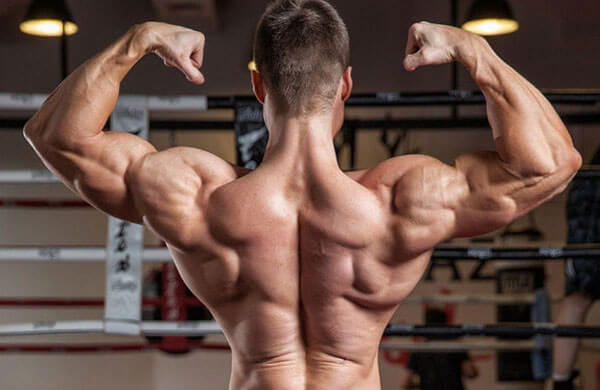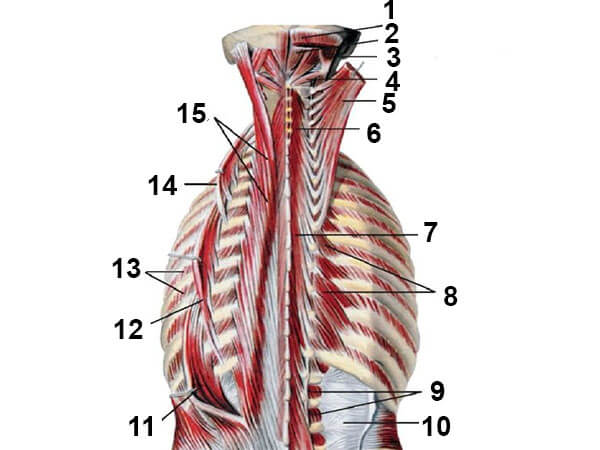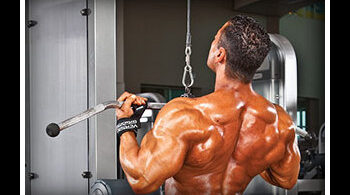Category - Back Muscles
In sports, it is customary to consider the back muscles in a simplified version, highlighting only a few muscles. However, the group contains a large number of muscles that have a complex structure. Understanding how the human back muscles are structured will allow you to work out the entire group more effectively. This will have a positive effect on the growth of muscle mass, strength, and endurance, as well as improved posture.

The structure of the back muscles
The back is one of the most important areas, not only because of its functions and structure but also because it is a shield for the internal organs and spine. The structural features of the back muscles are that all the muscles of the group are paired and symmetrical.
The anatomy of the back muscles is quite complex, therefore, for a more effective study of the structure of the group, it is divided into two conditional subgroups:
- External;
- Internal.
Also, the categories of superficial and deep back muscles are divided into layers, 3 for each type.
Back muscle layers anatomy table
| Layer | External | Domestic |
|---|---|---|
| 1 or superficial | Trapezius muscle (includes upper, lower and hood parts); Latissimus. |
Belt muscles (neck and head). |
| 2 or medium | Small and large diamond-shaped. | Back extensors (Sacrospinous), include the iliospinous and long fasciculi; Pepperospinalis (includes rotators, semispinalis, and multifidus). |
| 3 or deep | The upper and lower are serrated; Supraspinatus; Infraspinatus; Teres major and minor muscles; Subscapular; Elevator scapula. |
Intertransverse; Interspinous; Raising the ribs; Suboccipital; Lumbar rotators; Multifidus lumbar muscle. |
Scheme of the deep back muscles

2 – rectus capitis posterior minor
3 – superior oblique capitis muscle
4 – inferior oblique capitis muscle
5 – semispinalis capitis muscle
6 – semispinalis capitis muscle
7 – semispinalis thoracic muscle
8 – levator ribs muscles
9 – medial intertransverse muscles lower back
10 – thoracolumbar fascia (deep plate)
11 – iliocostalis muscle
12 – iliocostalis pectoralis muscle
13 – external intercostal muscles
14 – iliocostalis muscle of the neck
15 – longissimus muscle
Back muscle areas
Among other distributions, the muscles of the human back are anatomically divided into zones. There are 5 areas in total:
- Scapular;
- Subscapular;
- Lumbar;
- Sacral;
- Vertebrate.
Superficial back muscles
In sports, the deep back muscles are usually not highlighted. Most often, they do not need additional training (anatomically, the deep back muscles do not require separate training) and develop along with the others. The main attention is paid to the superficial back muscles, as they shape the appearance and hypertrophy well under systematic loads. The focus is on the latissimus and trapezius muscles, as well as the erector spinae.

Functions of the back muscles
Back training is quite complex if you pay attention to all-around development and not just the latissimus muscle. In addition to knowing the table with the anatomy of the back muscles, it is important to understand what functions each of them has.
Functions of the back muscle (basic):
- The latissimus muscle is the largest in the spinal group and largely determines the appearance of the entire area. Performs extension and tilt of the back, and participates in the movements of the scapula and shoulder girdle. Also takes part in breathing and fixes the ribs.
- Trapezius muscle – this muscle is located on the back in the upper part, represented by three parts: hood, middle and upper. Its role is to lower and raise the shoulders, ensure movement of the shoulder blades, throwback or turn the head (upper part).
- The rhomboid muscle is attached between the shoulder blade and the spine, brings the shoulder blades together and down, and takes part in their rotation. To a greater extent determines posture.
- The serratus anterior is responsible for the upward rotation and abduction of the scapula.
- The splenius capitis muscle moves the head back to the sides (participates in turning).
- The extensor muscles (sacrospinalis) are the most important element in the structure of the human back muscles. Allows you to maintain a straight body position and straighten it after bending. It is formed by two bundles: the longest and the most costly.
In addition to the main ones, the atlas of the human back muscles includes a group that is involved in movements in the shoulder joint. It distinguishes:
- Supraspinatus – abducts the shoulder (no more than 15 degrees).
- Infraspinatus and teres minor – extension, external rotation, and abduction (if the arm is in a horizontal plane).
- Subscapularis – internal rotation, extension, and adduction.
In sports, the main attention is paid to the anatomy of the superficial back muscles, therefore all training is aimed only at their development.
Best exercises
Considering that exercises for the deep muscles of the back are not practiced or popular in sports, the most important and global movements for the group should be considered, taking into account their nature and impact on parts of the back.
Basic movements
Lat
- Pull-ups.
- Bent-over barbell row.
- T-bar row.
- Upper block thrust.
- Bent over dumbbell row.
- Lever rod.
- Horizontal block traction.
Trapeze
- Pull to the chin (“broach”).
- Bent over dumbbell row.
- Lee Haney Deadlift.
Lumbar and extensors
- Deadlift.
- Romanian deadlift.
- Exercise “Superman”.
- Exercise “Good Morning”.
Insulating
Taking into account the anatomy and structure of the human back muscles, there are no isolation exercises for the lats, so only the trapezius and lower back are considered in this category.
Trapeze
- Shrugs.
- Raising the shoulders in a sitting position.
Small of the back
Hyperextension.

